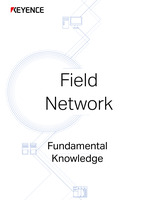ControlNet
This section explains ControlNet.
Overview
ControlNet is an open network developed by an American company, Rockwell Automation, Inc. in 1997. It is now managed by ODVA. As with DeviceNet®, ControlNet uses the Common Industrial Protocol (CIP). DeviceNet® or ControlNet is selected according to the communication method. DeviceNet® is generally considered suitable for data transmission with slaves individually, and ControlNet is suitable for communication using integrated slave I/O.
Wiring Method and Communication Protocol
Wiring method
Coaxial optical fiber cables are used for wiring. ControlNet supports various topologies, such as bus, tree, and star, and the transmission rate can be selected up to 5 Mbps. Up to 99 stations can be connected, and the distance between stations can be extended up to 1000 m (3280.8′).
Communication protocol
As with DeviceNet®, ControlNet uses CIP. All stations use the same communication cycle, called the network interval. The communication speed between stations can be individually set. Communication is performed at network intervals consisting of a controlled period and an uncontrolled period, which allows for communication with devices that have different communication speeds or in unfixed communication cycles.
Characteristics
ControlNet communicates using the producer/consumer method. The master sends 510 bytes of data at a time, called a MAC packet, to each station during the network interval. Each station that received the MAC packet checks the data ID and reads the related data. This system allows for data links within a specified cycle.

A: MAC packet
B: Network interval
C: Time outside the controlled period
Related Networks
DeviceNet®
This is an RS-485 based open network using CIP.
CompoNet
This open network uses CIP and is used for communication with sensors and actuators with small numbers of I/O points.
- Company, product, and network names mentioned on this page are either trademarks or registered trademarks of their respective companies.
- Note that some information, such as applicable standards and specifications, may have changed since this page was published.
November 2015






